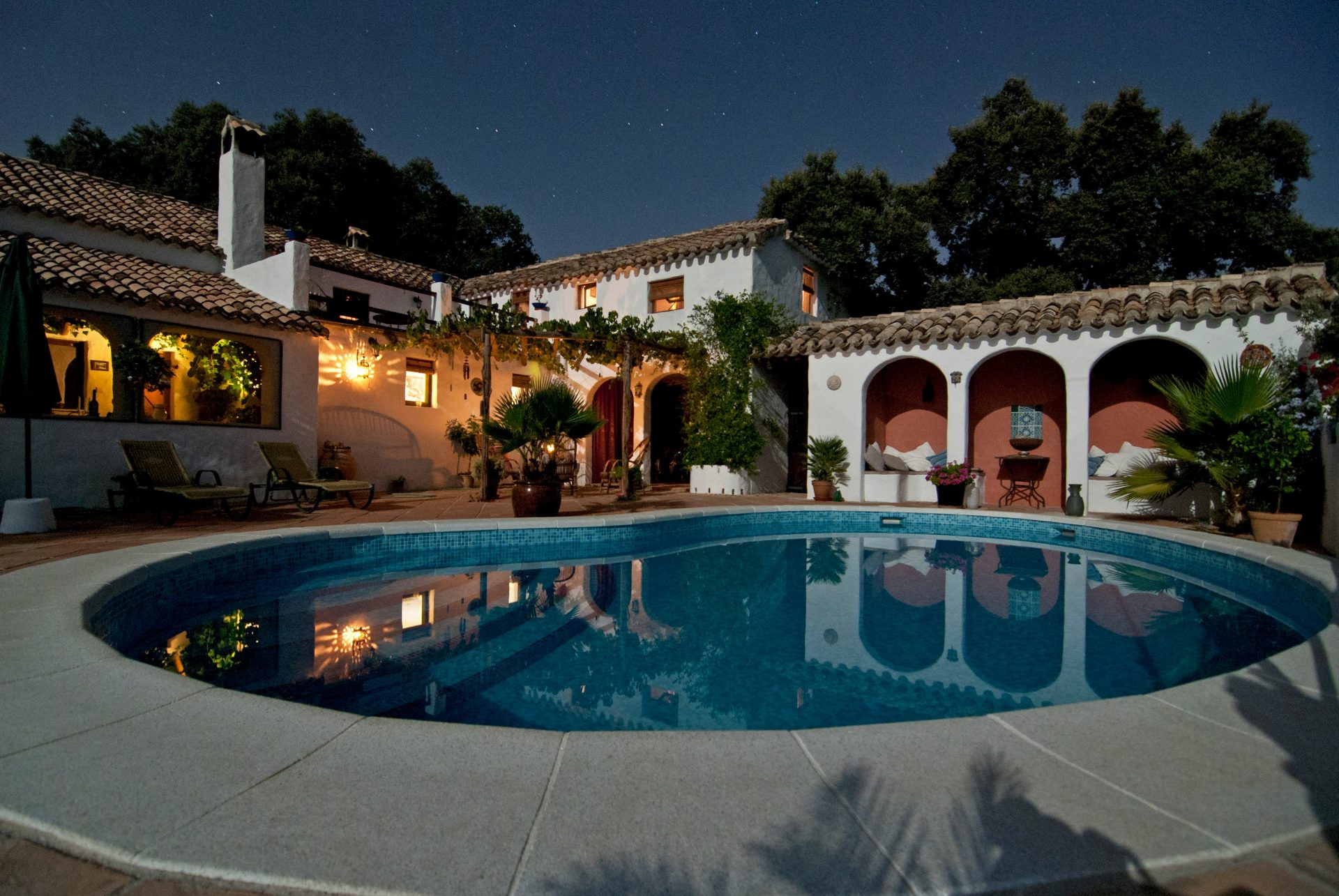Luxury home value growth, which has consistently lagged the market’s middle tier over the past several years, has now outpaced appreciation on typical homes for five consecutive months, a new Zillow analysis shows.
The typical luxury home nationwide — defined for this analysis as the most valuable 5% of homes in a given region — is worth about $1,620,000. Among the 50 largest U.S. metro areas, the typical luxury home ranges from a low of just under $750,000 in Buffalo to more than $5.3 million in San Jose.
Luxury home values across the U.S. are 3.9% higher than a year ago. That’s faster appreciation than the 3.2% annual growth for the typical U.S. home. For every month from January 2019 — the earliest year-over-year change in Zillow’s records — through January 2024, typical home values were outpacing luxury homes on an annual basis. For every month since, luxury home values have been growing faster.
“Luxury homes can be challenging to sell because the pool of buyers is so much smaller. That’s one reason prices for them usually grow more slowly,” said Anushna Prakash, economic research scientist at Zillow. “We’re seeing a different trend play out this year. Luxury home buyers are likely less affected by higher mortgage rates than a typical buyer, especially repeat buyers who saw their home equity soar over recent years. Many will be able to pay with cash and skip a mortgage payment altogether.”
Luxury home inventory has been slower to recover than inventory overall, helping to keep prices climbing. Inventory in the luxury segment is up 15.7% year over year and is 46.9% below pre-pandemic norms. By comparison, total inventory is 22.7% higher than last year and about 32.6% below pre-pandemic averages.
The share of luxury listings with a price cut is climbing, but is tracking below the market as a whole. In June, 20.8% of luxury listings experienced a price cut, up from 19.4% the previous June. Among all homes, 24.5% of listings had a price cut.
The luxury home market in Richmond is red hot, with values 16.5% higher than last year, far surpassing the growth seen in any other major market. Hartford luxury homes had the next strongest growth, up 8.6% over the same period. Luxury home inventory in Richmond is down 13.2% year over year, making it one of only six major markets with fewer luxury homes for sale than last year. Luxury homes in Richmond that sold in June did so after just six days on the market, the fastest rate in the country.
Austin is the only major market where luxury home values declined over the past year, down 1.5%. Home values in Austin overall saw a meteoric rise during the pandemic, and a building boom in response to that demand has helped lessen competition for each home and bring price growth under control.
| Metro Area | Typical Luxury Home Value | Luxury Home Value Change Year over Year (YoY) | Luxury For-Sale Inventory Change (YoY) | Share of Luxury Listings with a Price Cut | Median Days to Pending for Luxury Listings |
| United States | $1,619,685 | 3.9 % | 15.7 % | 1.4 % | 24 |
| New York, NY | $3,483,722 | 2.2 % | -4.4 % | 0.5 % | 57 |
| Los Angeles, CA | $4,642,958 | 3.5 % | 35.5 % | 2.1 % | 31 |
| Chicago, IL | $1,343,781 | 5.6 % | 0.5 % | -0.4 % | 13 |
| Dallas, TX | $1,635,382 | 5.3 % | 32.6 % | 5.4 % | 22 |
| Houston, TX | $1,415,411 | 4.8 % | 0.0 % | 2.1 % | 23 |
| Washington, DC | $2,029,263 | 3.4 % | 11.3 % | -3.5 % | 11 |
| Philadelphia, PA | $1,269,418 | 4.6 % | 14.4 % | 2.2 % | 8 |
| Miami, FL | $4,077,925 | 2.9 % | 15.0 % | 1.4 % | 83 |
| Atlanta, GA | $1,457,787 | 5.0 % | 16.8 % | 1.4 % | 23 |
| Boston, MA | $2,698,471 | 5.8 % | 13.7 % | -0.7 % | 17 |
| Phoenix, AZ | $2,037,033 | 7.1 % | 19.1 % | 6.2 % | 39 |
| San Francisco, CA | $4,298,273 | 1.1 % | -4.0 % | -1.0 % | 16 |
| Riverside, CA | $1,692,781 | 4.6 % | 21.8 % | -0.5 % | 35 |
| Detroit, MI | $903,679 | 3.7 % | 11.0 % | 0.6 % | 7 |
| Seattle, WA | $2,927,108 | 4.5 % | 3.2 % | 0.3 % | 9 |
| Minneapolis, MN | $1,188,521 | 0.9 % | 15.9 % | 2.3 % | 26 |
| San Diego, CA | $3,799,265 | 5.9 % | 17.3 % | -2.7 % | 24 |
| Tampa, FL | $1,639,706 | 2.7 % | 80.4 % | 0.0 % | 38 |
| Denver, CO | $1,991,133 | 1.1 % | 11.6 % | 2.9 % | 17 |
| Baltimore, MD | $1,329,549 | 4.6 % | 13.3 % | 0.5 % | 8 |
| St. Louis, MO | $1,002,017 | 4.8 % | 8.5 % | 1.5 % | 7 |
| Orlando, FL | $1,425,759 | 4.7 % | 43.2 % | 1.0 % | 30 |
| Charlotte, NC | $1,607,506 | 7.9 % | 21.2 % | 5.6 % | 22 |
| San Antonio, TX | $1,158,841 | 1.0 % | 19.6 % | 0.0 % | 33 |
| Portland, OR | $1,506,635 | 0.4 % | 19.3 % | -2.1 % | 20 |
| Sacramento, CA | $1,794,005 | 2.1 % | 17.0 % | -0.5 % | 18 |
| Pittsburgh, PA | $839,418 | 5.2 % | 1.4 % | 3.8 % | 11 |
| Cincinnati, OH | $949,801 | 5.3 % | 6.5 % | -0.8 % | 7 |
| Austin, TX | $2,106,787 | -1.5 % | 24.7 % | 1.9 % | 68 |
| Las Vegas, NV | $1,587,199 | 7.5 % | 0.2 % | 1.7 % | 42 |
| Kansas City, MO | $1,041,851 | 4.4 % | 15.9 % | 3.5 % | 8 |
| Columbus, OH | $1,014,617 | 4.4 % | 26.8 % | 1.1 % | 10 |
| Indianapolis, IN | $988,246 | 3.2 % | 12.8 % | -2.9 % | 9 |
| Cleveland, OH | $810,190 | 7.1 % | -4.5 % | 2.3 % | 8 |
| San Jose, CA | $5,330,815 | 6.4 % | 19.1 % | -4.7 % | 10 |
| Nashville, TN | $2,113,255 | 3.1 % | 12.1 % | 2.1 % | 35 |
| Virginia Beach, VA | $1,227,058 | 5.6 % | 10.1 % | -2.3 % | 32 |
| Providence, RI | $1,861,985 | 7.8 % | 30.5 % | 2.6 % | 20 |
| Jacksonville, FL | $1,646,706 | 4.3 % | 36.5 % | 5.9 % | 44 |
| Milwaukee, WI | $1,234,835 | 5.5 % | -19.5 % | -3.5 % | 24 |
| Oklahoma City, OK | $847,637 | 1.7 % | 24.4 % | 4.5 % | 34 |
| Raleigh, NC | $1,489,123 | 6.9 % | 38.0 % | -1.1 % | 9 |
| Memphis, TN | $860,564 | 2.2 % | 41.5 % | 0.6 % | 40 |
| Richmond, VA | $1,152,228 | 16.5 % | -13.2 % | 1.8 % | 6 |
| Louisville, KY | $848,250 | 2.6 % | 43.5 % | -1.0 % | 9 |
| New Orleans, LA | $1,033,156 | 0.0 % | 17.3 % | 1.1 % | 42 |
| Salt Lake City, UT | $1,600,130 | 4.0 % | 34.2 % | 0.1 % | 20 |
| Hartford, CT | $1,004,138 | 8.6 % | 3.0 % | 2.5 % | 7 |
| Buffalo, NY | $748,623 | 4.9 % | -5.4 % | 0.7 % | 11 |
| Birmingham, AL | $1,124,634 | 4.0 % | 19.3 % | 1.2 % | 13 |
| *Table ordered by market size | |||||
Thanks for reading CPA Practice Advisor!
Subscribe Already registered? Log In
Need more information? Read the FAQs




